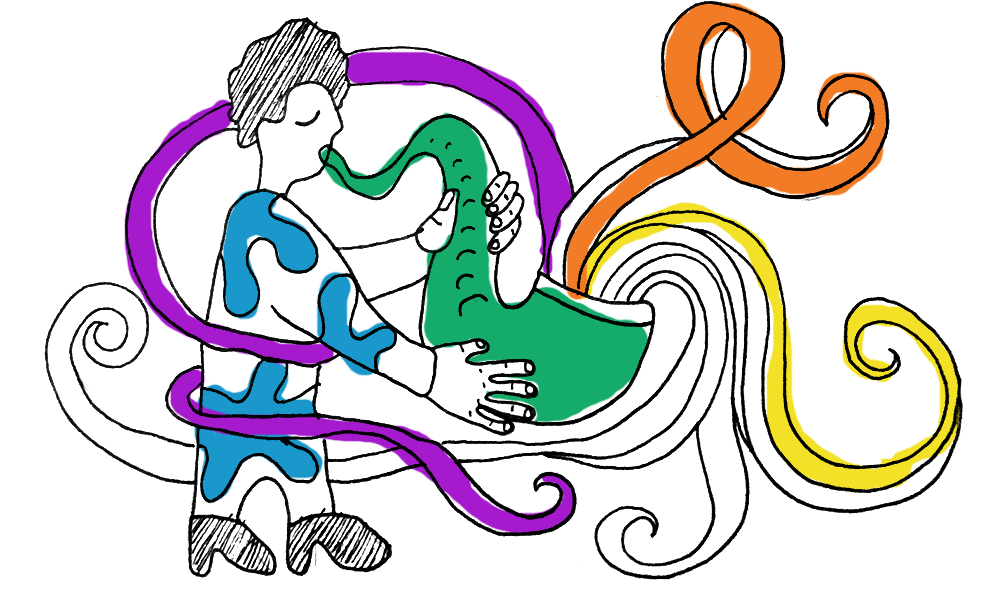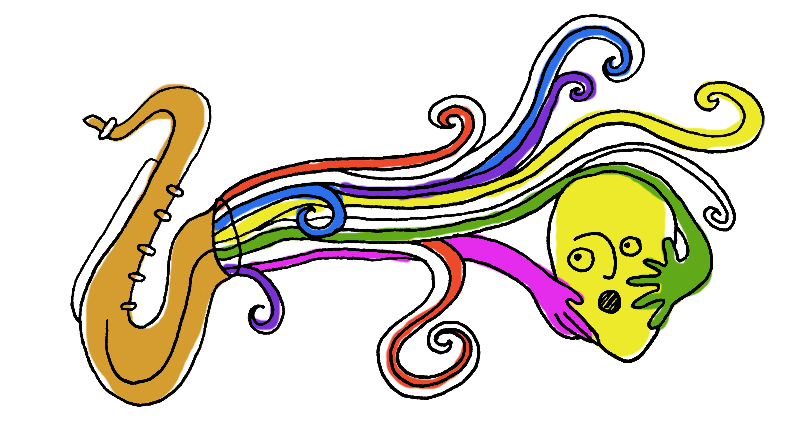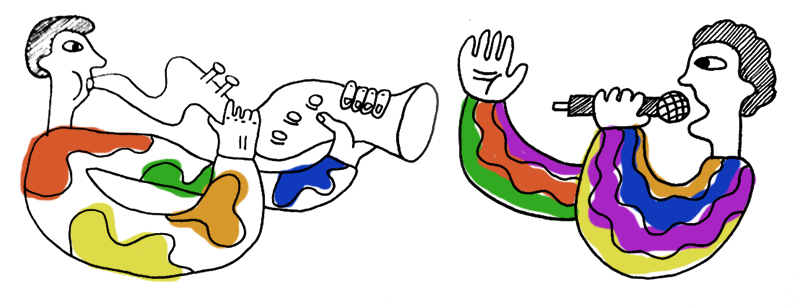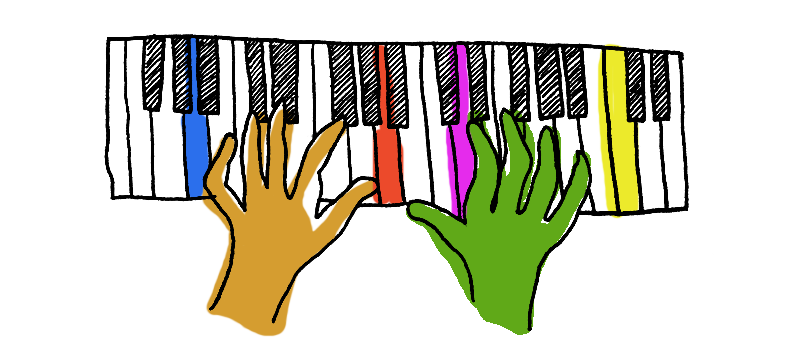If you ask me, there were quite a few cringe-worthy moments in the movie La La Land but one moment especially hit home. Early in the story, Emma Stone’s character, Mia, apprehensively confesses to Ryan Gosling’s idealistic jazz pianist that she “hates” jazz. It’s probably intended to show Mia’s relatability for the audience, but this viewer at least winced with recognition. The fact that Mia eventually discovers that she likes jazz after all is less about digging the music than about giving the viewer the Hollywood ending they want. She’s not alone in her defensiveness when it comes to America’s music — believe me, plenty of people tend to give us jazz fans the side-eye whenever the topic comes up.
The sad truth is that all too often jazz suffers the same kind of casual dismissal that hip-hop, country, and EDM used to get before they took over the mainstream. Granted, this might be something only a jazz lover would notice but since at least the ’70s, jazz has become something of a niche market, to put it mildly. In terms of yearly record sales, jazz usually sells as much as classical music does, one of the many things the two genres have in common. Far too often jazz comes off as dated or quaint; it’s your granddad’s make out music. Worse, there’s an implied snobbishness often projected onto loving jazz — it’s a little like explaining that you prefer to spend your Saturday nights translating Hegel or making artisanal cheese.
As much as I disagree with all of this, I can’t say that I don’t understand it. Growing up in the ’90s, my radio was always tuned to classic rock and alternative rock, which meant that like most of America, I was consuming different varieties of pop music almost exclusively. Part of what makes pop music popular is that it’s so easily digestible. You know the drill: introductory riff, verse, chorus, verse, maybe a bridge, usually a guitar solo, maybe a repeat of the chorus, and then over and out. Pop songs subtly cue the listener about when to sing along about how you can’t get no satisfaction or how the haters are gonna hate, hate, hate or that we all live in a yellow submarine. Don’t get me wrong, there’s absolutely nothing wrong with this — only a true snob belittles a song for being fun or accessible. Writing a well-crafted song requires great skill, any old way you choose it. I love the Beatles, the Ramones, and a slew of other rock bands with a lifetime’s passion, but the one question I want to submit to the jazz-phobic is very simple: have you listened to it lately?
I remember the way I felt after popping a John Coltrane CD in the boombox — I told you it was the ’90s — all those years ago. Basically, it was culture shock. Nothing had prepared me for such a radical departure from how I had unconsciously assumed music was supposed to sound. A jazz tune could easily be up to 18 minutes long, often totally instrumental, and featuring three or four different extended solos from unfamiliar instruments, maybe from a saxophone, trumpet, and upright bass. I admit that I didn’t like it at first — jazz was weird, intimidating, and kind of overwhelming.
It felt a little like that scene in the movie Amadeus when the emperor attends Mozart’s new opera, and awkwardly explains that he nodded off in the middle because there were “too many notes.” New art of any kind can be a lot to take in at first; that’s part of the point. And whether the Emperor Joseph II actually did say this, his reaction is pretty common. Lena Dunham said pretty much the same thing about jazz in a social media post. The thing is, Mozart’s legendary rebuttal speaks for all musicians who find themselves in a similar situation: “there are as many notes as there should be.” What a wonderful defense not only of the composer’s skill, but a vindication of the artistic process. There’s often a method in what initially sounds like madness. Sometimes it takes a while for one’s aesthetic aperture to open. It’s up to the listener to find their own way into the new experience being offered. And once I did, when it all finally clicked, I was hooked for life.
The song that converted me was John Coltrane’s immortal version of “My Favorite Things.” In some ways, it’s a perfect place to start. Coltrane, the devoted craftsman, knew exactly what he was doing. The melody is instantly recognizable, easy to hum along to, and flexible enough to allow the musicians to stretch out. It became one of his most enduringly popular songs, and he experimented with it throughout his career, occasionally going for hour-plus excursions. His rarely-used soprano saxophone swoops and dangles along the edges of those familiar cadences, bending those familiar notes, searching for the key that will unlock the next ecstatic cascade of sound while Steve Davis’s bass throbs like a heartbeat and McCoy Tyner’s piano ripples like the wind gliding over a clear blue stream. Don’t take my word for it, have a listen yourself.
That’s only one song, of course, a mere drop in the bucket of Coltrane’s massive discography, but there’s so much more where that came from. Everything that makes jazz great is in there: the harmony and the dissonance, an appearance of effortlessness amid deep concentration, the amazing ways in which the musicians take a hoary old standard and make it new. Each musician is giving it everything they’ve got, staying open to what’s happening in the moment, encouraging and accentuating the rhythm and the melody to change and adapt to new textures and moods. Scholars have pointed out that jazz is an example of deep democracy in action — everyone collaborates while also being given their own space in which to tell their own story.
Listening to jazz is a bit of a lost art in our ADD age, where we are constantly checking and updating our social media profiles, posting pictures and texts, commenting, liking, tweeting and retweeting, perpetuating a discourse that is everywhere and nowhere. No surprise that hip-hop, with all its verbal density and obsessive self-promotion, has become the soundtrack to our era. I’d argue that jazz offers the same kind of pleasure in a different form. Jazz and rap have plenty in common, not only because of their deep roots in the African-American experience (more on that later) but their reliance on improvisation, storytelling, and the competition and mutual encouragement inherent in community. Replace words and phrases with notes and scales and it’s not that different at all, as MCs from Rakim (who cited Coltrane’s sheets of sound as a lyrical influence) to DJs like A Tribe Called Quest’s Ali Shaheed Muhammad, who used innumerable jazz samples as the backbone of classic Tribe tunes, can attest.
Jazz’s connection to other musical genres extends beyond classical and hip-hop, as well. If you can rock out to, say, Jimi Hendrix or Eric Clapton’s extensive riffing, then there’s no reason why you can’t enjoy Sonny Rollins or Dizzy Gillespie’s epic solos. Jazz offers plenty of opportunities for the same kind of thrills, and with a greater variety of tone and mood and texture. The level of freedom inherent in this kind of improvisation is exhilarating. Like any acquired taste, it might take some getting used to, not in an eat-your-broccoli way but in the sense of rewiring how you hear music in the first place.
The best way that I can describe it is that instead of listening for the usual type of pop song (though jazz offers plenty of those), you’re listening to sound. Jazz exalts in the beautifully minute cadences that come fresh every time, often made up on the spot, a thousand little melodies pouring out of one source. Falling in love with jazz has deeply enhanced the way I hear all music; instead of always waiting for the big climax or the familiar repetition, I learned to go with the flow. Sometimes, listening to jazz is like hearing an impassioned speech or running at top speed, other times it’s the perfect accompaniment for late night brooding or a romantic swoon.
It isn’t surprising that jazz musicians are often interested in things like Zen and spirituality (not to mention drugs and drink), and the reason might be because they have the professional obligation to be both deeply in the moment and outside of it at the same time. It’s fun to watch, too, as live clips and classic photographs demonstrate. There’s something wonderful about watching a musician’s breath animating their instrument, fingers flying over drum kits, thick strings and gleaming keys struck at just the right moment, telling a million stories in a voice beyond words.
Jazz has something to offer for every taste, no matter what musical itch you want scratched. If you’re feeling spiritual, there’s the testimony of Coltrane, of course, and his underrated wife Alice. If you want to get a party started, you could do a lot worse than hanging with the likes of Cab Calloway or Louis Armstrong. For smoldering ballads, try Miles Davis’s muted horn or Chet Baker’s delicate croon. Feel free to march along with Charles Mingus or Max Roach when in a militant mood. Put on Cannonball Adderley’s Somethin’ Else on a breezy summer’s day as you drive with the windows down. Try Ornette Coleman’s “Lonely Woman” or the restrained elegance of Bill Evans for poetic expressionism. Feeling lovelorn and want to cry in your beer? May I suggest a liquid lunch with Billie Holliday and Lester Young, who were lovers in every way but one.
Jazz can be athletic music, too: give Art Blakey and the Jazz Messengers a spin the next time you’re at the gym. After Sun Ra and his Arkestra take you to outer space, explore the eccentric genius of “the high priest of bebop,” Thelonious Monk, and let the hard driving swing of Count Basie bring you back down to earth. If you’re into electric instruments, then may I suggest tripping the light fantastic with Bitches Brew or the Mahavishnu Orchestra. As for the ladies of jazz, you haven’t lived until you’ve heard what Sarah Vaughn, Ella Fitzgerald, Blossom Dearie or Nina Simone can do with a melody. Of course, I’m only scratching the surface of each of these categories — there’s roughly a century of music to choose from, and the varieties of tone and mood are endless.
Contemporary jazz doesn’t get nearly as much attention as it once did, but there are scores of amazing musicians playing right now who deserve to be heard. The Marsalis brothers are probably the best-known, maybe Joshua Redman too, and they are all certainly worthy, but that’s only the tip of the iceberg of what’s happening now. Try Brad Mehldau’s ineffable reworkings of Nick Drake and Radiohead tunes to start, or delve into Noah Preminger’s atmospheric take on ancient blues. Kamasi Washington, Robert Glasper, Madlib and Flying Lotus intriguingly mix their love of hip-hop with their fluency in traditional jazz stylings. Tomas Fujiwara and Vijay Iyer each explore the outer limits of the music like no one else. Cassandra Wilson and Diana Krall keep the torch song lit, and the brilliant Esperanza Spaulding graces every note she plays with her unique spirit. Each of these musicians (to name but a few) keeps jazz alive in their own way, on their own terms, which is the only way it should be done.
The recent spate of documentaries and biopics are an encouraging sign that the mainstream is starting to notice that jazz musicians aren’t exactly boring people. Their lives can be as dramatic as their music, and I’m looking forward to the day when people like Charles Mingus, Thelonious Monk, and Eric Dolphy get their proper retrospectives and have their legacies reinvigorated like Johnny Cash and Ray Charles did. Jazz records tend to have intriguing titles, too, which is often indicative of the wonders contained within. Check these out, for a start: Money Jungle, The Black Saint and the Sinner Lady, The Creator Has A Master Plan, East Broadway Run Down, Moon Beams, The Blues and the Abstract Truth, Out to Lunch, The Sidewinder, Empyrean Isles, and Sketches of Spain, just to name a few.
It’s no secret that jazz was born out of the crucible of oppression endured by African Americans that began long before anyone even considered declaring that all men were created equal. Appreciating jazz’s deep roots in the blues (like most of American music) is crucial to understanding its role in American musical history. As Cornel West says, “the blues is personal catastrophe lyrically expressed” and the opportunity for this kind of expression provided a means of survival through catharsis, a way of living with pride and self-affirmation within a degraded and degrading social structure.
It takes a tremendous amount of unredeemed suffering to learn how to swing this hard, which makes jazz not only a powerful aesthetic statement but a social and political one as well. For many, jazz offered a rare opportunity to engage in all manner of forbidden freedoms: pleasure, movement, community, critique, and unrestrained self-expression, when such things were routinely repressed by official state policy. The technical virtuosity required to play it at its highest levels gave people like Duke Ellington and Charlie Parker special resonance for a community that refused to be defined by other people’s belittling projections. After hearing Art Tatum, an awestruck Arthur Rubenstein said that if Tatum ever took up classical music, he’d quit the next day.
Nowadays, other genres of music tend to carry this kind of socio-political weight. What was transgressive and alluring for previous generations has now become commonplace, but there’s so much further we need to go until the possibilities imagined by the music match the realities of our society. For example, consider Kendrick Lamar, himself a jazz fan, vindicating his art form by being the first ever rapper to win the Pulitzer Prize for music. It would be a devastating loss to our culture if we were to let jazz be callously dismissed as merely a relic of a bygone era, a quaint historical oddity, and let its exuberant innovation fall on deaf ears. Everything old becomes new again, and we can still learn a lot from what jazz can teach us.
Any artist, regardless of whatever intentions they might have, ultimately wants the same thing: to be valued, debated, studied — in a word, to be heard. Appreciation isn’t exploitation if it’s rooted in respect and a willingness to approach the art on its own terms, which leads to awe at what human beings can create. Over the years, jazz has inspired countless poets and writers, musicians of all kinds, rappers and DJs, filmmakers, painters, and even a president or two. Once you let it infuse your life, jazz is far from snooty; it’s sublime. If you haven’t gotten hip to it yet, why miss out? There are decades of amazing music just waiting to be (re)discovered. All you need to do to listen. As Louis Armstrong once said, “if you have to ask, you’ll never know!” •
All images by Isabella Akhtarshenas.








